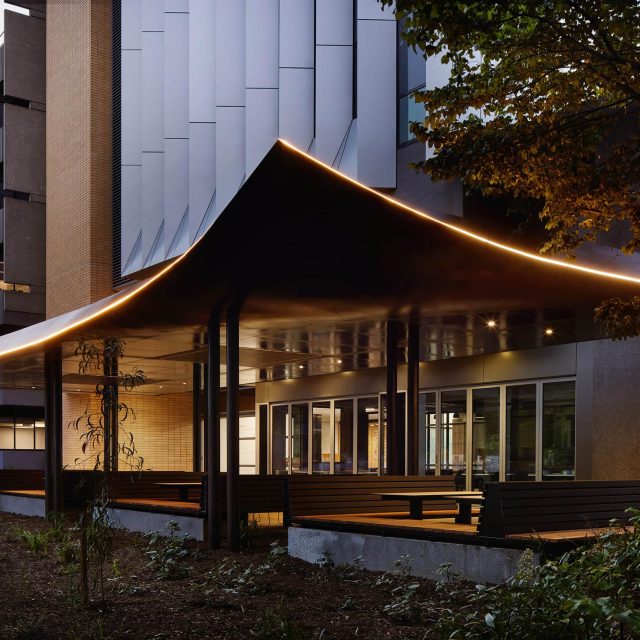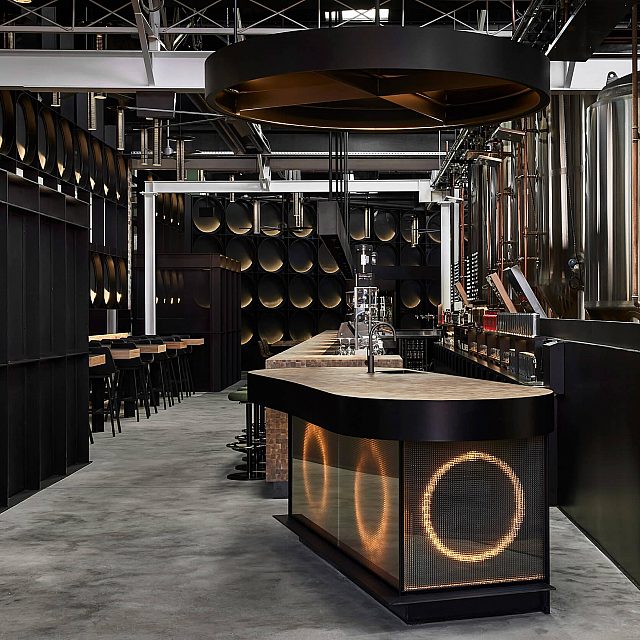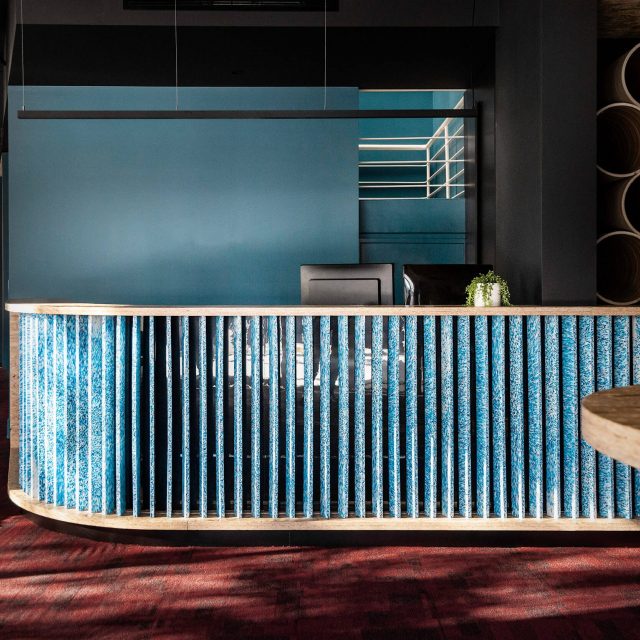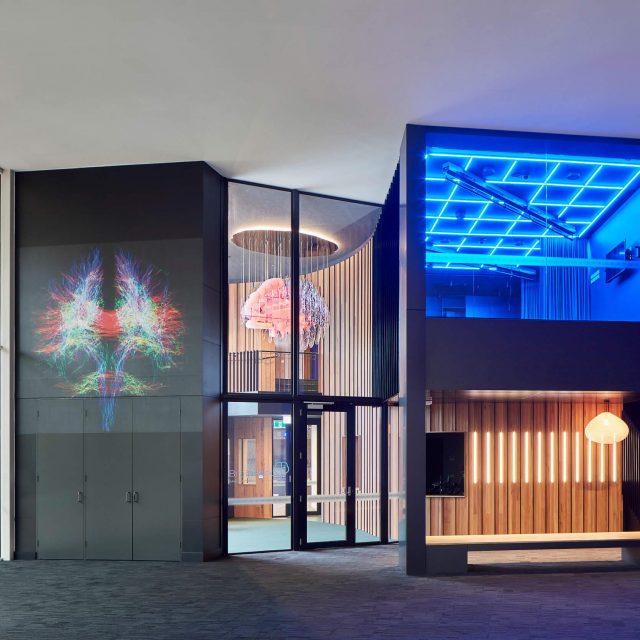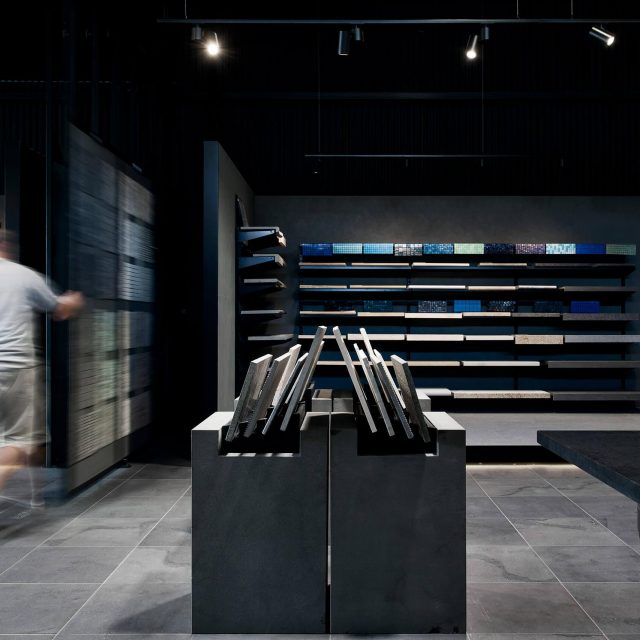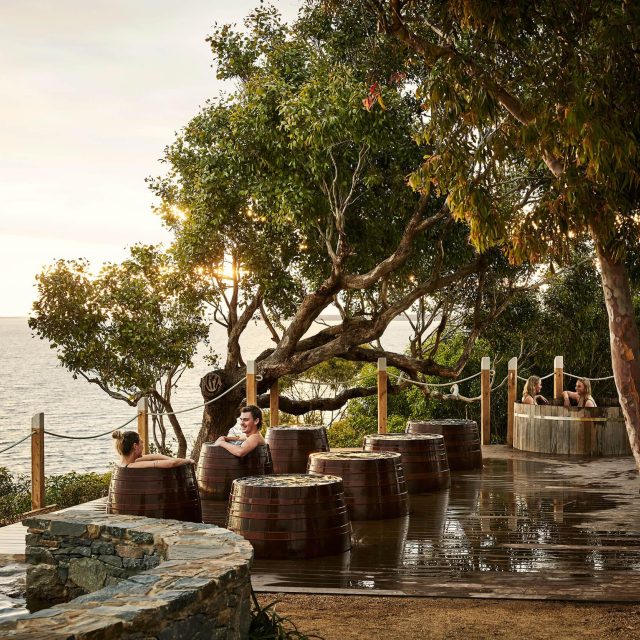
Working within the shell of a former warehouse building, the fitout for the Project 281 Café embraces Brunswick’s iconic industrial past to create an immersive hospitality experience. The abandoned warehouse concept preserves the character and history of the original building which has been gradually exposed over the years. It adds new elements in a way that feels as if it has become naturally overgrown and will continue to do so with the passage of time. From plate to fitout, the design builds on the venue’s raw, robust, sustainable, and unexpected hospitality approach.
Reclaimed by nature, the program is distinguished by dispersed, naturalistic plantings which make evident the passage of time. The vast footprint of the warehouse is broken into more intimate dining areas through the accumulation of stacked cast concrete forms, fashioned from various sizes of pre-cast drainage sumps into sculptural dividers and planters. Along one wall, a series of metal bars are embedded into the brickwork which will allow the plants to continue to climb over time. Simultaneously, the metal is designed to gradually rust adding colour and texture across the wall through the process of corrosion. The bench seating follows along the walls and sculptures, like timber scattered through a building site and the deep orange colour of the upholstery picks up on the rusted quality.
Creating a truly “Brunswick” dining experience, the design embraces the beauty of imperfection by crafting elements from raw building materials. The café service counters are made from layers of poured concrete which draw on the patterns exposed in floors revealing stains and blemishes from its manufacturing past. A wall of rebar steel is formed to create a mezzanine area with bathrooms tucked below. Feature lighting has been fashioned from offcuts of rebar steel and large compositions of detached lacework.
In addition to adding to the strong sense of place, the design also links to the venue’s distinct hospitality concept which also combines simple, raw ingredients into exceptional compositions. The approach to both the culinary vision and venue design is rough in nature, with an attention to detail and underlying order which show care and consideration.
Across the two levels is a coffee roastery, yoga space, herb garden, seating for 120, and a large kitchen area. The layout purposely includes a defined zone between the front-of-house and back-of-house to celebrate the preparation of the food. Functionally contributing to the dishes, an herb garden is built into the upper-level mezzanine which grows some of their unique components.
Working together, the interiors and food concepts harness the raw beauty to create a comfortable, inviting atmosphere for the casual day-to-night drinking and dining space. With an element of unexpected, the fitout will continue to evolve giving customers good reason to come back time and time again.
Back to Projects












